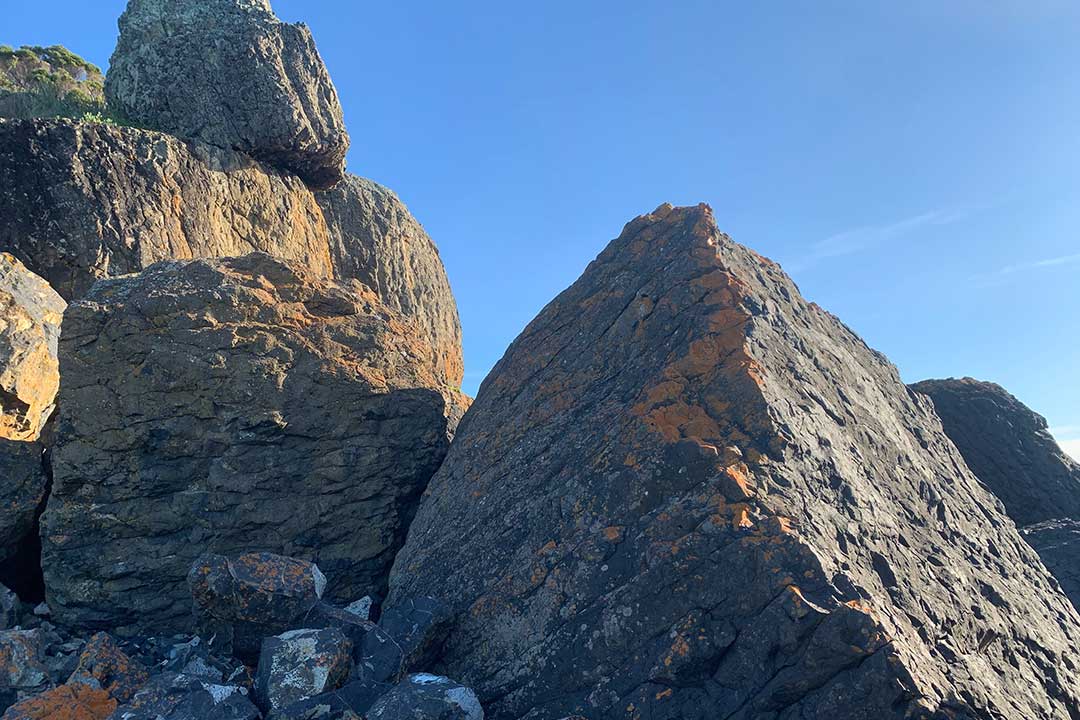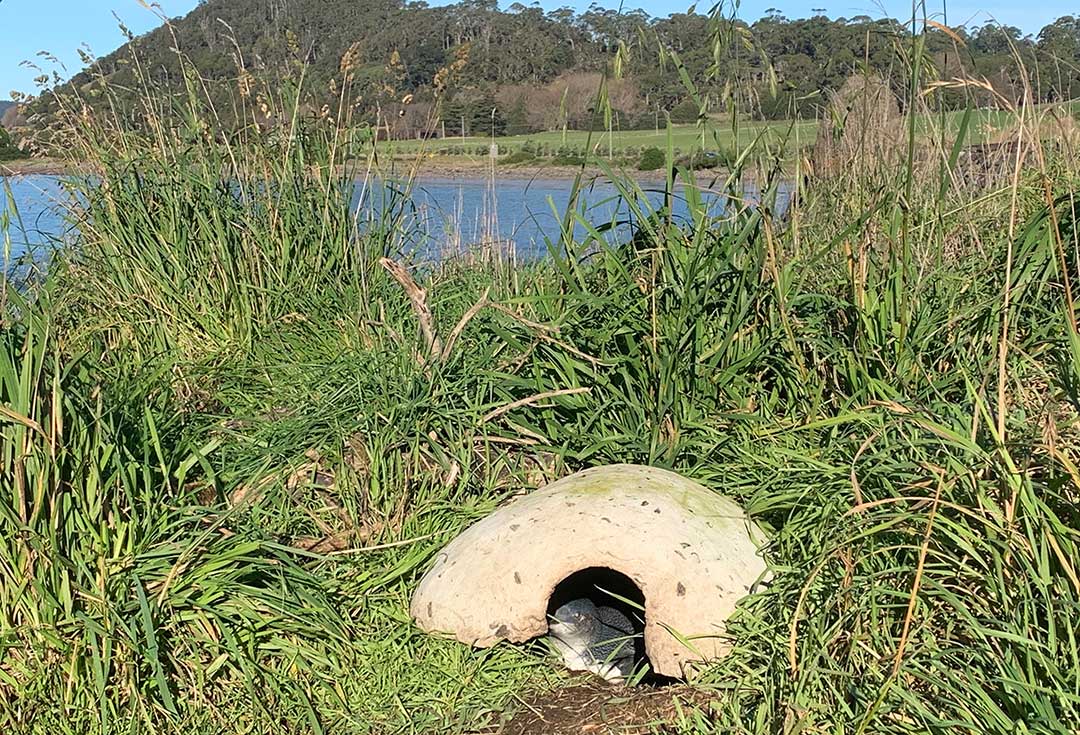
Doctors Rocks is a small rocky headland of basalt on the beachfront near where Seabrook Creek enters Bass Strait, behind which an escarpment rises to the north west coast plateaux. The terrain forced early road builders to construct a narrow roadway behind the rocks that was the scene of many serious accidents before modern vehicular traffic forced major earth-moving and re-siting of the main road further away from the rocks. The locality is Wynyard’s premier spot to capture a Tasmanian sunset.
Doctors Rocks protrude 100 metres north from the shore rising to 20 metres in height. A beach extends for 300 metres west of the rocks to the junction of the old and new Bass highways, with the old railway paralleling the rear of the beach and a narrow vegetated reserve between it and the shore. Doctors Rocks was named after Dr Thomas Wilson who lived at the rocks. For many years he served the community between Circular Head and Burnie.


In addition to basalt, several trace minerals occur on the site including gold, the presence of which has attracted gold panners for decades. Gold and rare Osmiridium can still be panned on the foreshore in various places toward Wynyard at low tide, and appears to derive from the tillite.

The Doctors Rocks Conservation area is home to a significant number of little penguins with large groups on the immediate west and eastern sides of Doctors Rocks itself and smaller pockets of penguins along the whole conservation reserve. The Little Penguins have no difficulty in traversing over the rocky terrain to get to their nesting areas, but significant numbers utilize the sandy beaches as access points from the water to the foreshore nesting area.
The “Wildcare” group called the ‘Friends of Doctors Rocks Penguins' is based around working closely with the Tasmanian Parks and Wildlife Service to maintain the Conservation Area in the interests of the welfare of Little Penguins.
The objectives of this group include: offering tourists and local visitors an opportunity to see Little Penguins in their natural habitat during their breeding season (September to April), provide non intrusive viewing opportunities and interpretation talks according to established practices; observe and report on the behaviour of Little Penguins; report on any changes to the physical environment of the area due to natural weather events; engage in cleanup and general maintenance of the area; regularly maintain the penguin fence and install artificial penguin nests (sometimes called concrete ‘igloos’) and report to relevant authorities any inappropriate behaviour observed in the Conservation Area.